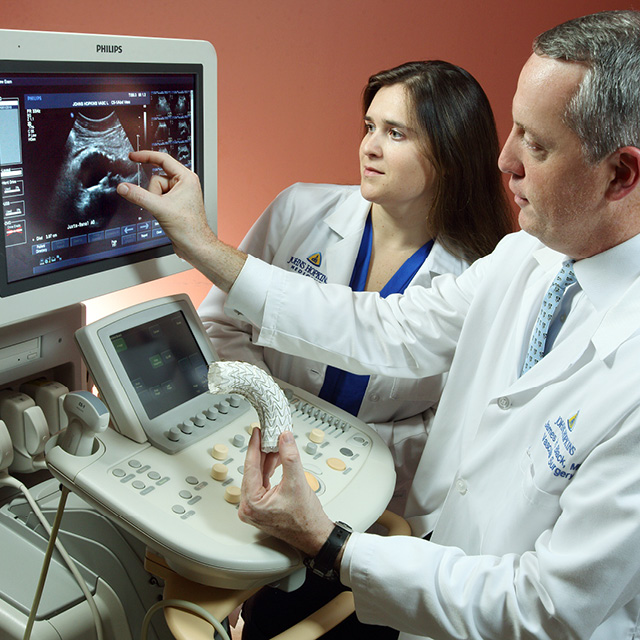
As a vascular surgery fellow training under Division Chief James Black, Caitlin Hicks became fascinated by the stories of how patients with congenital aortic syndromes found their way to Johns Hopkins for treatment. She started a database of patients, including their symptoms, how long it took them to be diagnosed and how their conditions were managed.
These anomalies of the peripheral vascular system are rare, affecting less than 1 percent of the population. Some patients learned about Black, one of the few surgeons who treat these conditions, by searching the internet or participating in online chat rooms.
“These patients have abnormal, often nonspecific symptoms people don’t usually associate with arterial disease,” says Hicks, who joined the faculty this year. They tend to “go through a lot of different doctors and never have their symptoms resolved or understand why they have them. When we realize what the issue is, we can often make a very big difference in their quality of life.”
The database is tracking conditions such as aberrant right subclavian artery, in which the right arm artery comes off the aorta on the left side and passes behind the esophagus. Most often seen in 40- to 50-year-old women, the condition puts pressure on the esophagus, causing trouble swallowing, eating or drinking. Patients can present with mild chest pain. “They usually get extensive cardiac workups that are negative,” Hicks says. A bypass from the right carotid artery to the right subclavian artery, from neck to arm, clipping off the artery that goes behind the esophagus to cut that blood flow, usually resolves the problem.
Another condition being tracked is aortic coarctation—a narrowing of the aorta that can cause patients to experience heart failure, pulmonary edema, leg pain or pain with eating because of abnormal blood flow from the chest to the abdomen and legs. It is typically diagnosed in patients in their late teens to mid-20s. For this, Hicks and Black most commonly use stent grafts, placing a stent on a balloon threaded up through the groin to open the aorta narrowing.
So far, about 25 to 30 patients have been added to the database. Hicks says she hopes to share information with professional colleagues and with patients through a website to drive education and referrals to the appropriate specialists.
The database is one of several maintained by the vascular surgery department, says Black. Others are tracking patients who have vascular changes brought on by diabetes or by defects in connective tissue, such as Marfan, Loeys-Dietz or Ehlers-Danlos syndromes.
“There are patients out there who are looking for answers and just don’t know where to go,” says Black. “By putting together information saying we’re interested in this and we’re surgically skilled to do the operations when required, it could start to centralize some of these patients and help educate the community about some of these rare conditions.”
Learn more about adult congenital aortic syndrome.
To refer a patient, call 410-955-5165.
